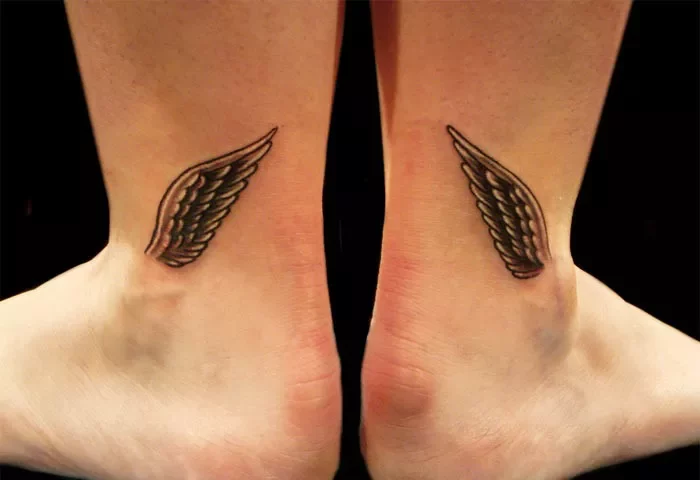Getting a tattoo is an exhilarating experience, but it often comes with the question of pain. If you’re considering an ankle tattoo, understanding the pain level associated with this area is essential. This article explores the factors influencing pain during ankle tattooing, personal experiences, and tips to manage discomfort.
Understanding Tattoo Pain
Tattoo pain is subjective and can vary greatly from person to person. Several factors contribute to how painful a tattoo can be:
Individual Pain Tolerance
Each person has a different pain threshold, influenced by factors such as genetics, past experiences, and psychological state. What might be excruciating for one person could be merely uncomfortable for another.
Location of the Tattoo
The location of the tattoo plays a significant role in determining pain levels. Areas with more flesh and muscle generally hurt less than those with less padding and more bone or nerve endings.
Tattoo Size and Complexity
Larger and more complex designs require longer tattooing sessions, which can increase discomfort. A small, simple tattoo might be quick and less painful, while a detailed design could lead to increased pain over time.
Tattooing Technique
The tattoo artist’s technique can also impact pain levels. Experienced artists who use proper techniques may cause less discomfort than those who are still perfecting their craft.
Why Do Ankle Tattoos Hurt?
Ankle tattoos tend to hurt more than tattoos in other areas of the body for several reasons:
Thin Skin and Bones
The skin on the ankle is thinner than in other areas, making it more sensitive to needle penetration. Additionally, the ankle is close to the bone, which can amplify the sensation of pain during the tattooing process.
Nerve Endings
The ankle has a high concentration of nerve endings. When the tattoo needle makes contact, it can stimulate these nerves, leading to a heightened sense of pain.
See Also: The Symbolism of Crown Tattoos: Embracing Royalty
Muscle and Fat Content
The ankle has less muscle and fat tissue compared to areas like the upper arm or thigh. This lack of padding means there is less cushioning between the needle and the bone, making the experience more painful.
Pain Levels: What to Expect
Pain is often rated on a scale from 1 to 10, with 1 being minimal discomfort and 10 being unbearable pain. For ankle tattoos, most people report pain levels between 6 and 8 during the procedure, with some variations based on individual factors.
Personal Experiences
People’s experiences with ankle tattoos can vary widely:
Mild Discomfort: Some individuals describe the sensation as a light scratching or buzzing, similar to a strong vibration.
Moderate Pain: Others may feel a sharper pain, especially when the needle hits sensitive areas or bony parts of the ankle.
Severe Pain: A few report feeling intense discomfort, particularly during longer sessions or more intricate designs.
Managing Pain During the Tattoo Process
While it’s impossible to completely eliminate pain, several strategies can help you manage discomfort during an ankle tattoo:
Choose the Right Artist
Selecting an experienced tattoo artist can make a significant difference. Look for someone who specializes in ankle tattoos or has a good reputation for their technique and gentleness.
Communicate Openly
Discuss any concerns with your tattoo artist before the session. They can adjust their technique or take breaks if you feel overwhelmed by the pain.
Bring a Friend
Having a supportive friend with you can provide comfort during the process. They can distract you or help you relax through conversation or encouragement.
Practice Relaxation Techniques
Breathing exercises, meditation, or visualization can help calm your mind and reduce your perception of pain. Consider practicing these techniques before and during the tattoo session.
Numbing Creams
Some people use topical anesthetics or numbing creams before getting tattooed. Consult with your tattoo artist about using these products, as they can sometimes interfere with the ink’s application.
Aftercare and Healing
Proper aftercare is crucial for healing and minimizing discomfort post-tattoo. Follow these tips for effective aftercare:
Keep it Clean
Wash the tattoo gently with mild soap and water to remove any blood or ink. Pat it dry with a clean towel—avoid rubbing.
Moisturize
Apply a fragrance-free moisturizer or tattoo aftercare ointment to keep the skin hydrated. This helps reduce itching and promotes healing.
Avoid Sun Exposure
Protect your ankle tattoo from direct sunlight, especially during the initial healing period. Use sunscreen once the tattoo is healed to maintain its vibrancy.
Follow Artist Instructions
Your tattoo artist will provide specific aftercare instructions. Following these guidelines is essential for a smooth healing process and minimizing discomfort.
Conclusion
Ankle tattoos can be more painful than tattoos in other areas of the body due to the thin skin, proximity to bone, and concentration of nerve endings. However, with proper preparation, pain management strategies, and care, you can make the experience more comfortable. Remember that pain is temporary, and the result—a beautiful tattoo—can be a lasting source of pride and self-expression. Ultimately, the decision to get an ankle tattoo should consider both the pain factor and the significance the tattoo holds for you.
You Might Be Interested In

